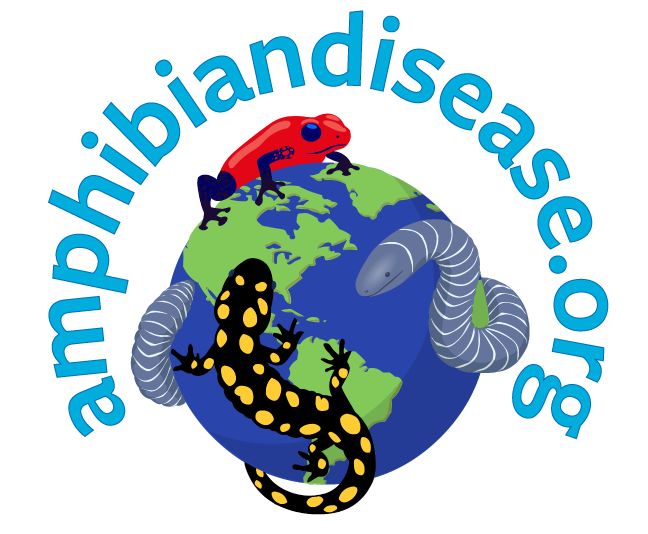Projects
Bd invasion in Aneides lugubris and Batrachoseps luciae
Recommended Citation:
Vredenburg, V. 2017 "Bd invasion in Aneides lugubris and Batrachoseps luciae " AmphibiaWeb: Amphibian Disease Portal.
Data Last Modified: Tue Apr 20 2021
Project Description
Mae Cowgill thesis title: Social behavior, community composition, pathogen strain and host symbionts drive fungal disease. Abstract: In many ecological communities, amphibians are abundant as both consumers and prey, linking aquatic and terrestrial productivity. However an emerging fungal pathogen Batrachochytrium dendrobatidis (Bd), which causes the disease chytridiomycosis, has severely affected amphibians globally. Investigating pathogen transmission and susceptibility of hosts is vital to develop applicable disease ecology theory, but most Bd studies have focused solely on anurans (frogs and toads) while many species of salamanders are also affected. Our study describes chytridiomycosis dynamics and susceptibility in two co-occurring terrestrial salamander species (the narrowly-endemic Santa Lucia Mountains Slender Salamander ,Batrachoseps luciae and the widely distributed arboreal salamander, Aneides lugubris) in California where the same disease has decimated frog populations. We (1) conduct a retrospective survey of Bd prevalence over the last century from museum specimens, (2) determine present-day Bd prevalence in the field, (3) use generalized linear models to identify biotic (e.g. species overlap, group size) and abiotic correlates of infection risk, (4) investigate susceptibility of salamanders exposed to anuran-collected versus salamander-collected Bd strains in laboratory trials, and (5) examine the ability of naturally occurring host skin bacteria to inhibit Bd in culture. We find that Bd emerged, became established and increased in prevalence in both salamander species beginning as early as 1969-1971, similar to Bd epizootic emergence patterns in other species of amphibians in California. Our susceptibility trials show high mortality in both species (60%,70%, B. luciae, A. lugubris, respectively) when exposed to salamander-collected Bd, but no mortality when exposed to anuran-collected Bd. Furthermore, we found that B. luciae disease prevalence is positively correlated with conspecific group size, and distance to A. lugubris. Our Bd inhibition assays found that both hosts have symbiotic skin-bacteria that inhibit growth of the pathogen, which may help explain how these species are able to persist in the wild with Bd. We suggest that Bd infection dynamics plays a significant role in population dynamics of these terrestrial salamander species and that the emergence of the pathogen may have had severe, yet unnoticed effects on populations over four decades ago.
Information
Project PI: Vance Vredenburg
Project Contact: Vance Vredenburg
Dataset DOI: https://n2t.net/ark:/21547/Ajp2
Publication DOI: None Available
Project Data - Public
Events: 881 || Samples Collected: 2918
Click on each bar for more details. For larger datasets, chart scrolling is enabled.
